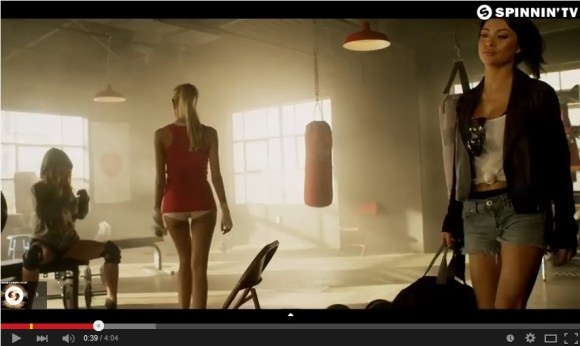
Dutch house producer R3hab and KSHMR have joined vowel-hating forces to lay down their newest single “Karate.” Its pulsing beats have been well received by house music fans and selling copies fast. But as we can see from the image above, there’s something else about “Karate” that is getting people’s attention and over 5 million views on YouTube.
That’s right! It has a lot to teach us about the world-famous martial art it’s named after. I guarantee even the most experienced karateka will learn something new from this video, so be sure to watch and study every scene very carefully.
The video opens with the kanji for “karate” and is followed by dozens of scenes showing people holding several types of weapons.
You might think that with the kanji translating to “empty hand,” weapons would have no place. Actually, it’s said that the “empty” is meant to refer to the practitioner’s mind so that they may use their skills justly, rather than the open hands that they may use to strike.
Going back further, the original kanji for karate was 唐手 meaning “Tang (Dynasty) hand” pointing to the era of China where the roots of modern Japanese karate began. The kanji was later changed to erase Chinese connection with the art during one of the nations’ many periods of heightened tensions.
▼ “Even a karateka has enough sense to know when you’re going into a real fight, it wouldn’t hurt to have some rings of death on you.”
From there the music video demonstrates the traditional part of training known as junbishi hajimeru or “start getting ready” in English.
You see, in real karate one actually begins to get ready only when they’re halfway through training. This is something your dojo is probably scared to teach you as it involves a lot of boxing practice, gymnastics rings, and doing push-ups with your knees on the ground and one hand on a ball.
To stay properly hydrated a karateka must not drink directly from a container. At least an inch of space must be left so that the chi of other fighters may enter it. You also should not actually drink the water. Instead pour it onto your chin so that the water may drink of you.
Finally we reach the post-training ritual of henshitsusha shauwa where karateka celebrate the end of a successful training session by gently caressing each other in a grimy shower room.
Traditionally this was an act performed exclusively by male fighters but as we can see women have recently been allowed to do it as well.
Overall, the “Karate” video has shown the great strides women in martial arts have made and I think we can all agree it has really achieved a victory for feminism in general. Otsukare samadeshita R3hab and KSHMR, or should I say “0tskr3 SMDSHT!”
If you like Karate purchase the track from beatport and support the artists
Source: YouTube – Spinnin’ Records, Kotaku (Japanese)

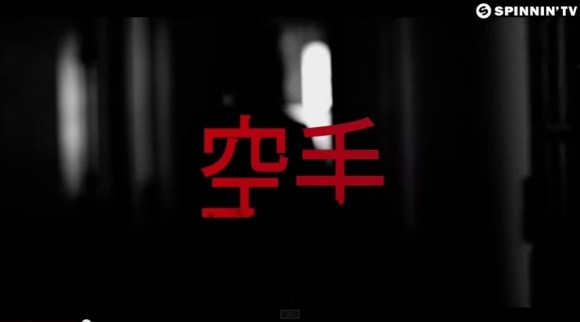
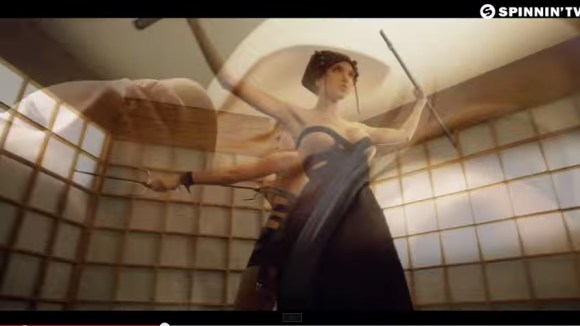
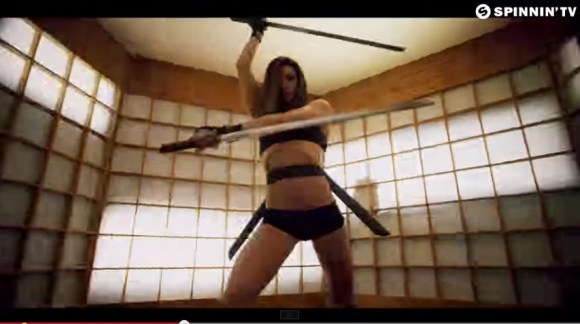
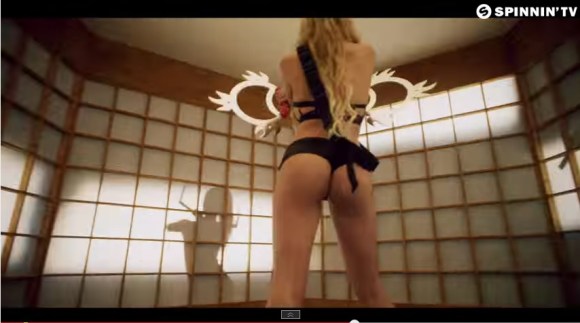
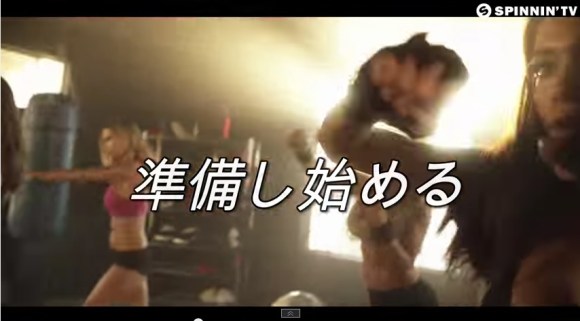
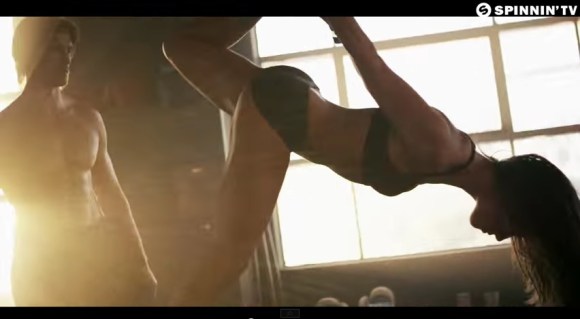
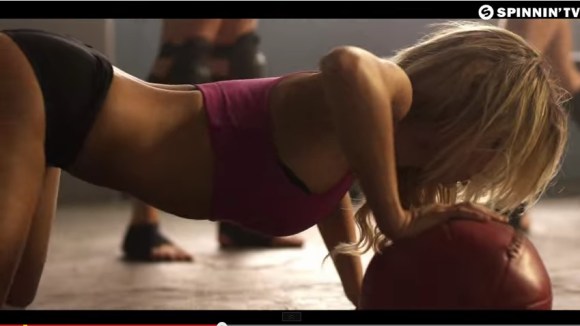
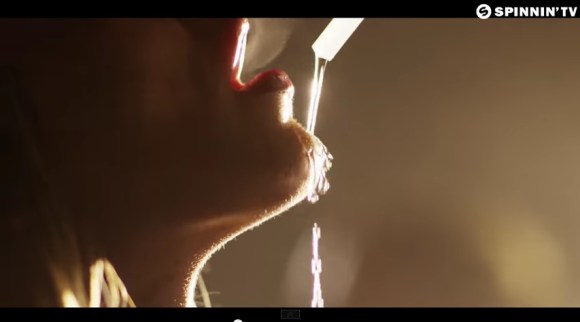

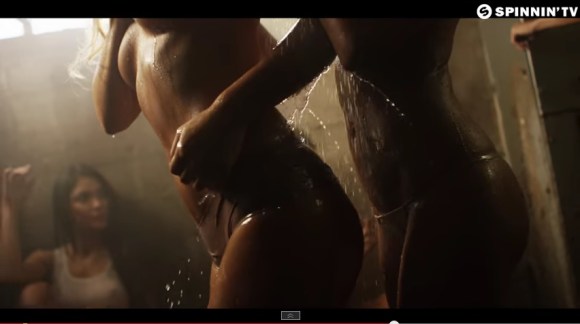
 Karate dojo students practice under freezing waterfall… in the middle of winter
Karate dojo students practice under freezing waterfall… in the middle of winter Japan’s nine-year-old karate champion returns—in Australian singer Sia’s new music video【Video】
Japan’s nine-year-old karate champion returns—in Australian singer Sia’s new music video【Video】 More Than a Capsule Stay: Why Solo Travelers Choose “global cabin Yokohama Chinatown”
More Than a Capsule Stay: Why Solo Travelers Choose “global cabin Yokohama Chinatown” Japan’s otoshidama tradition of giving kids money at New Year’s gets a social welfare upgrade
Japan’s otoshidama tradition of giving kids money at New Year’s gets a social welfare upgrade Survey reveals 70 percent of Japanese adults believe corporal punishment is necessary
Survey reveals 70 percent of Japanese adults believe corporal punishment is necessary New anime AI program animates your art for you when you add a voice clip【Videos】
New anime AI program animates your art for you when you add a voice clip【Videos】 Japan’s Self-Defense Forces take “radio calisthenics” to an interesting new level
Japan’s Self-Defense Forces take “radio calisthenics” to an interesting new level The 10 best hotel hot springs in Japan, as chosen by Japanese travelers
The 10 best hotel hot springs in Japan, as chosen by Japanese travelers Ladies, Please Don’t Be So Blatantly Disappointed With Your Delivery Man (At Least With How He Looks)!
Ladies, Please Don’t Be So Blatantly Disappointed With Your Delivery Man (At Least With How He Looks)! We found possibly the quietest Japanese-style hotel in Tokyo’s bustling Shinjuku district
We found possibly the quietest Japanese-style hotel in Tokyo’s bustling Shinjuku district We make a DIY face gel out of yuzu seeds, and it’s surprisingly cheap and easy!
We make a DIY face gel out of yuzu seeds, and it’s surprisingly cheap and easy! Kyoto restaurant only sells one dish, features mannequins and gets rave reviews!
Kyoto restaurant only sells one dish, features mannequins and gets rave reviews! Starbucks Japan ready to get Year of the Horse started with adorable drinkware and plushies【Pics】
Starbucks Japan ready to get Year of the Horse started with adorable drinkware and plushies【Pics】 7-Eleven Japan’s ramen-cooking robot whipped us up a bowl of noodles【Taste test】
7-Eleven Japan’s ramen-cooking robot whipped us up a bowl of noodles【Taste test】 Lacquerware supplier to emperor of Japan and Pokémon team up for new tableware
Lacquerware supplier to emperor of Japan and Pokémon team up for new tableware Cyberpunk anime meets traditional culture in Ghost in the Shell gold leaf Japanese changing screens
Cyberpunk anime meets traditional culture in Ghost in the Shell gold leaf Japanese changing screens 7 great places to see Mt. Fuji from without having to climb it
7 great places to see Mt. Fuji from without having to climb it Japan may add Japanese language proficiency, lifestyle classes to permanent foreign resident requirements
Japan may add Japanese language proficiency, lifestyle classes to permanent foreign resident requirements Hello Kitty Choco Egg figures are an adorable trip through three periods of Japanese pop culture【Pics】
Hello Kitty Choco Egg figures are an adorable trip through three periods of Japanese pop culture【Pics】 Starbucks Japan releases new zodiac chilled cup drink for 2026
Starbucks Japan releases new zodiac chilled cup drink for 2026 Can a dirty butthole make you filthy rich in Japan? We’re starting a New Year’s lottery experiment
Can a dirty butthole make you filthy rich in Japan? We’re starting a New Year’s lottery experiment 7-Eleven Japan starts new temporary luggage storage service in over 300 branches
7-Eleven Japan starts new temporary luggage storage service in over 300 branches Disillusionment at Tsukiji’s tourist-target prices led us to a great ramen restaurant in Tokyo
Disillusionment at Tsukiji’s tourist-target prices led us to a great ramen restaurant in Tokyo Starbucks teams up with 166-year-old Kyoto doll maker for Year of the Horse decorations【Photos】
Starbucks teams up with 166-year-old Kyoto doll maker for Year of the Horse decorations【Photos】 Tokyo considering law requiring more trash cans following litter increase in heavily touristed area
Tokyo considering law requiring more trash cans following litter increase in heavily touristed area Tokyo’s Tsukiji sushi neighborhood asks tour groups to stay away for the rest of the month
Tokyo’s Tsukiji sushi neighborhood asks tour groups to stay away for the rest of the month Nintendo’s Kirby now delivering orders at Kura Sushi restaurants, but not in Japan
Nintendo’s Kirby now delivering orders at Kura Sushi restaurants, but not in Japan Tokyo event lets you travel back in time, for free, to celebrate 100 years since Showa era start
Tokyo event lets you travel back in time, for free, to celebrate 100 years since Showa era start Sanrio theme park in Japan announces plans to expand into a Sanrio resort
Sanrio theme park in Japan announces plans to expand into a Sanrio resort Stamina-destroying “Paralysis Noodles” are Tokyo’s newest over-the-top ramen innovation
Stamina-destroying “Paralysis Noodles” are Tokyo’s newest over-the-top ramen innovation Survey asks foreign tourists what bothered them in Japan, more than half gave same answer
Survey asks foreign tourists what bothered them in Japan, more than half gave same answer Japan’s human washing machines will go on sale to general public, demos to be held in Tokyo
Japan’s human washing machines will go on sale to general public, demos to be held in Tokyo Japan’s deadliest food claims more victims, but why do people keep eating it for New Year’s?
Japan’s deadliest food claims more victims, but why do people keep eating it for New Year’s? We deeply regret going into this tunnel on our walk in the mountains of Japan
We deeply regret going into this tunnel on our walk in the mountains of Japan Studio Ghibli releases Kodama forest spirits from Princess Mononoke to light up your home
Studio Ghibli releases Kodama forest spirits from Princess Mononoke to light up your home Major Japanese hotel chain says reservations via overseas booking sites may not be valid
Major Japanese hotel chain says reservations via overseas booking sites may not be valid Put sesame oil in your coffee? Japanese maker says it’s the best way to start your day【Taste test】
Put sesame oil in your coffee? Japanese maker says it’s the best way to start your day【Taste test】 No more using real katana for tourism activities, Japan’s National Police Agency says
No more using real katana for tourism activities, Japan’s National Police Agency says Starbucks Japan reveals new sakura drinkware collection, inspired by evening cherry blossoms
Starbucks Japan reveals new sakura drinkware collection, inspired by evening cherry blossoms Updated cherry blossom forecast shows extra-long sakura season for Japan this year
Updated cherry blossom forecast shows extra-long sakura season for Japan this year
Leave a Reply